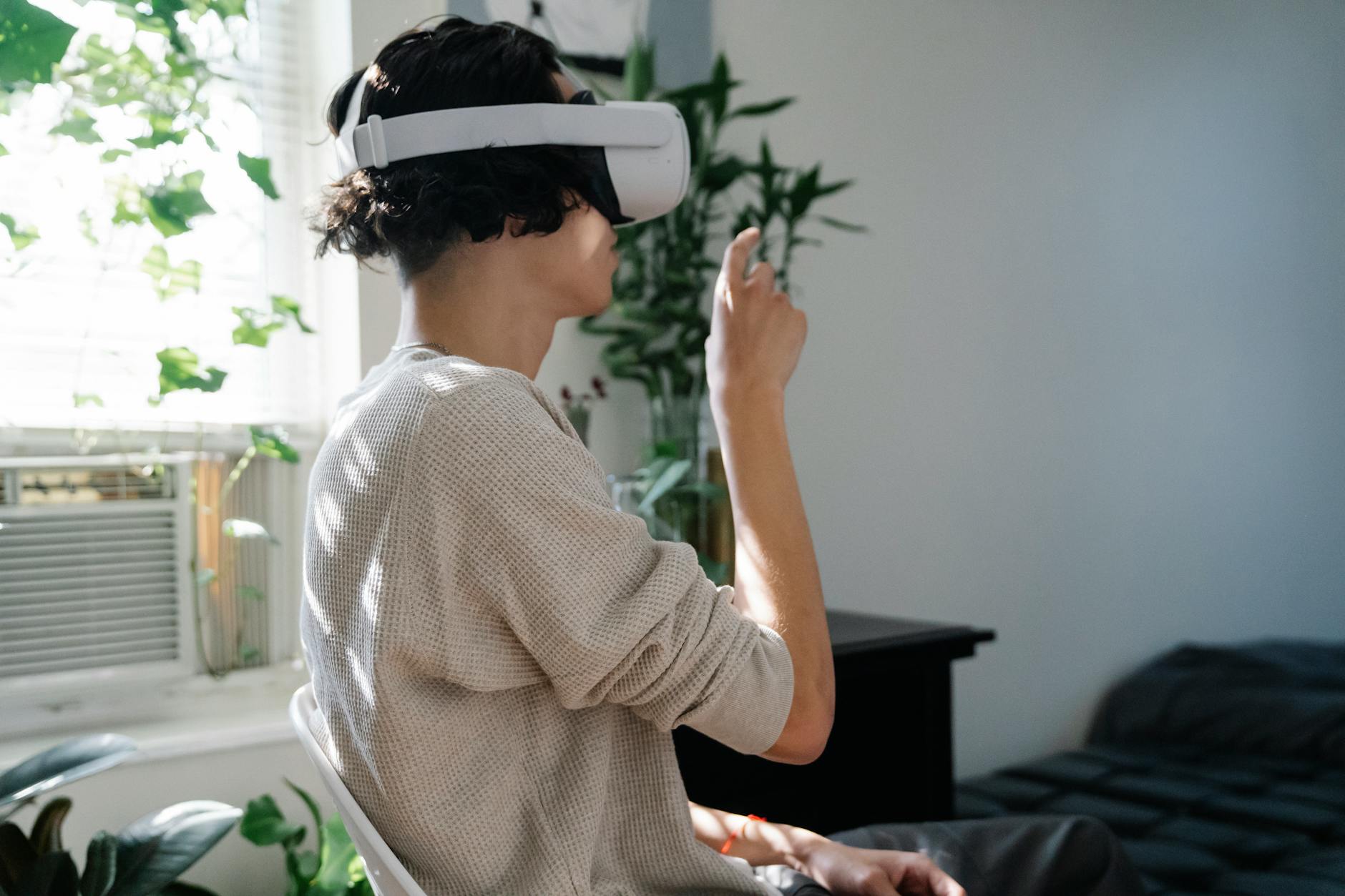
Image courtesy of Eren Li via <a target="_blank" rel="noopener noreferrer" href="https://www.pexels.com/photo/a-man-wearing-a-virtual-reality-headset-7241309/">Pexels</a>
Discover how VR and AR technologies are revolutionizing our perception of reality and transforming the way we interact with the world.
Table of Contents
Ready to dive into the fascinating world of Virtual Reality (VR) and Augmented Reality (AR)? If you’ve ever dreamed of stepping into a different reality or enhancing your world with digital overlays, you’re in for a treat. These cutting-edge technologies are reshaping the way we interact with our environment, from entertainment and education to business and healthcare. Let’s take a closer look at how VR and AR are revolutionizing our everyday experiences.
Immersive Experiences with VR
Virtual Reality offers a truly immersive experience that transports users to entirely new environments. Imagine being able to explore ancient ruins, swim with underwater creatures, or even travel to far-off planets – all from the comfort of your living room. With VR headsets like Oculus Rift and HTC Vive, users can delve into captivating virtual worlds and interact with objects and characters in ways that were once unimaginable.
But VR isn’t just for gaming. Industries such as architecture, healthcare, and training are harnessing the power of VR to simulate real-life scenarios and provide hands-on learning experiences. Medical students can perform surgeries in a virtual operating room, architects can walk through 3D models of their buildings before construction begins, and employees can undergo safety training in virtual environments. The possibilities are endless.
Enhanced Reality with AR
Augmented Reality, on the other hand, blends digital elements with the real world, overlaying information and visuals onto our physical surroundings. Think Snapchat filters, Pokemon GO, or Google Maps directions – all classic examples of AR in action. By using devices like smartphones or AR glasses, users can enhance their reality with valuable data, digital art, or interactive content.
AR has also made waves in the retail industry, allowing customers to virtually try on clothes, preview furniture in their homes, or visualize products before making a purchase. This enhanced shopping experience not only boosts customer engagement but also streamlines the decision-making process. Additionally, AR has found its way into education, where interactive AR apps can bring learning material to life and make lessons more engaging for students.
Pushing Boundaries and Unlocking Potential
The combination of VR and AR technologies is pushing boundaries and unlocking new possibilities in various fields. From therapy sessions for PTSD patients using VR exposure therapy to AR navigation systems in smart glasses for technicians working on complex machinery, these immersive technologies continue to reshape how we interact with our surroundings.
| Aspect | Virtual Reality | Augmented Reality |
|---|---|---|
| Definition | Immersive digital experience that completely replaces the real world | Overlays digital information onto the real world |
| Applications | Gaming, virtual tours, training simulations | Navigation, interior design, education |
| Hardware | Headsets, motion sensors, gloves | Smart glasses, smartphones, tablets |
| Interactivity | Full control over virtual environments | Interactive overlays in real-world settings |
| Impact | Enhanced immersion, escapism | Enhanced information, real-world integration |
Moreover, the integration of VR and AR in social experiences is bridging the gap between physical and digital interactions. Virtual meetings, concerts, and social gatherings are becoming increasingly popular, offering a sense of presence and connection in a world that has become more virtual than ever.
The Future of Virtual Versatility
As technology continues to advance, VR and AR are evolving at a rapid pace. With advancements in hardware, software development, and AI-driven applications, the future holds endless possibilities for these immersive technologies. From seamless integration with IoT devices to personalized virtual experiences tailored to individual preferences, the world of VR and AR is primed for exponential growth.
So, whether you’re a tech enthusiast eager to explore new frontiers or simply curious about how VR and AR are changing the way we experience the world, buckle up for a thrilling ride into a realm where the possibilities are virtually limitless!
Interested in learning more about Virtual Reality (VR) and Augmented Reality (AR)? Check out our FAQ section below for answers to some common questions:
How is VR different from AR?
Answer 1: VR creates a completely immersive digital environment that replaces the real world, while AR overlays digital information onto the real world, enhancing the physical environment.
What are some practical applications of VR and AR?
Answer 2: VR is used for gaming, virtual tours, and training simulations, while AR is applied in navigation, interior design, and education, among other fields.
How are VR and AR impacting industries and everyday experiences?
Answer 3: Industries such as healthcare, architecture, retail, and education are leveraging VR and AR to enhance training, visualization, and customer engagement, transforming the way we interact with our environment.
What does the future hold for VR and AR technologies?
Answer 4: The future of VR and AR is promising, with advancements in hardware, software, and AI-driven applications. Expect seamless integration with IoT devices, personalized virtual experiences, and exponential growth in the immersive technology space.




